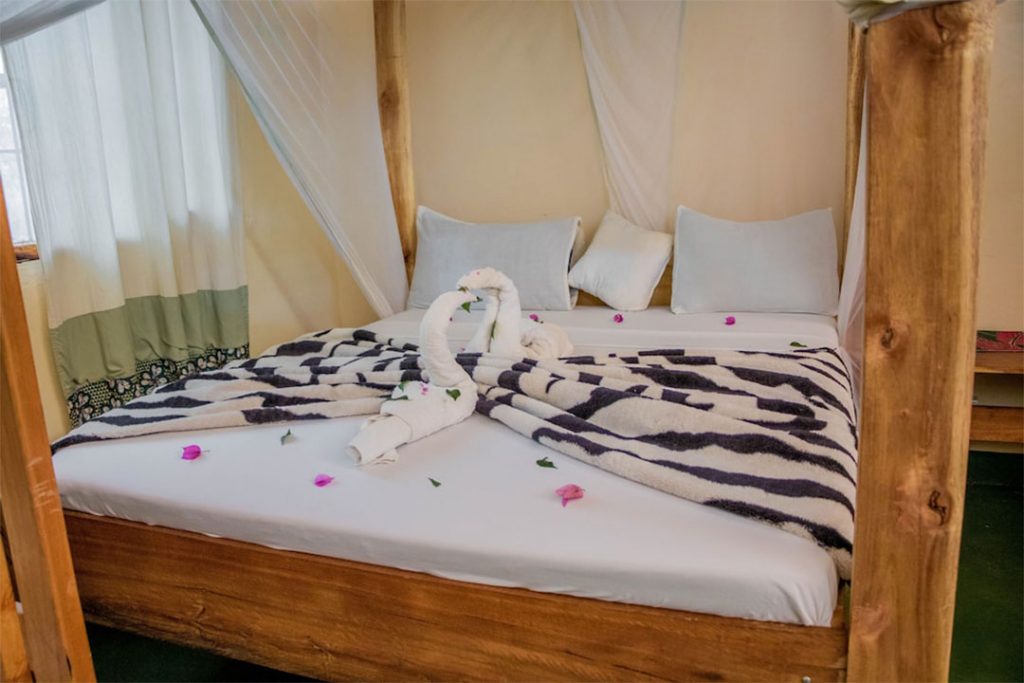One of the less popular official Kilimanjaro routes is the Kilimanjaro Rongai route. The benefit of this is that there won’t be many other climbers around and you’ll be walking through pristine wilderness and breathtaking scenery for the majority of the trek. The topography of this route makes it difficult to acclimate because you can’t easily follow the “walk high, sleep low” principle, which is one of the reasons it is quiet.
The route, which leaves from the Rongai gate, travels through a number of distinct climate zones, each of which offers breathtaking views and experiences. The route offers trekkers an experience in a relatively untamed wilderness where it is possible to see large animals like antelope, elephants, and buffalo due to its remote location. On the second day, as we ascend to Kikelewa Caves, we begin to see the Kenyan Amboseli Plains in the distance. After ascending to the mountain’s second summit, Mawenzi, the trail then crosses the Saddle, a desolate plain that connects Mawenzi and Kibo. After reaching the summit, you can view Mount Kilimanjaro from both sides by choosing the busier Marangu route for the descent.
The Kilimanjaro Rongai route, which is in Kilimanjaro’s rain shadow and experiences significantly less rain than the southern routes, is one of the best ways to attempt the mountain during the rainy season.

2 Nights in Moshi
To get to Kilimanjaro International Airport, every hiker must arrange their own flights (JRO). We will set up a private transfer for you from JRO to your hotel in Arusha. You will meet your local Sereti representative that evening or early the following morning and receive a thorough pre-climb briefing and gear checking
Transfer from your hotel to Marangu Gate for registration, followed by a second transfer (an additional two and a half hours) to the Rongai trailhead. Before we begin our ascent through the village of Nale Moru, our porters gather and pack our supplies and luggage. Before gently ascending through a pine forest and arriving at First Cave Camp at 2,600m elevation, the narrow, winding path first crosses maize fields.
After passing Second Cave (3450m) on the way to Kibo, the trail continues upward until it reaches Kikelewa Caves (3600m). From here, the scenery begins to widen, allowing you to appreciate just how enormous Kilimanjaro truly is. We spend the night camped here.
A short, steep ascent up grassy slopes is rewarded with breathtaking views in all directions and a real sense of wilderness. Shortly before we arrive at the following camp at Mawenzi Tarn (4330 m), which is magnificently located in a cirque directly below the tall spires of Mawenzi, we leave the vegetation behind. The afternoon will be free for you to relax or explore the neighborhood to help you acclimate.
As part of the acclimatization process, we'll spend a full day at and near Mawenzi Tarn. With numerous paths leading up the ridges and towers of Mawenzi, there will be plenty to do, and our staff will assist in setting up quick excursions to explore the area.
The Kibo Campsite (4750m), located at the base of the Kibo crater wall, is reached by traveling across the lunar desert known as the "Saddle" between Mawenzi and Kibo. Resting up for tomorrow's final ascent takes up the remainder of the day.
Around 23:30, you'll be awakened, and we'll start our ascent after some tea and biscuits. The going really gets tough at this point. The trail's first segment is a rocky path that leads to Hans Meyer Cave (5150m). Then, on the crater rim, we ascend zigzag style to Gilman's Point (5681m). The hardest part of the route is this section, which is extremely steep and covered in stone scree. We could run into snow from Gilman's Point all the way to Africa's highest point, Uhuru Peak (5895m). How long we can spend taking pictures on the summit will depend on the weather, after which we will head back to Kibo Campsite and spend the night there. We eat our final meal on the mountain later that evening, and then we get some well-deserved rest.
After breakfast, we keep moving down to the Marangu Gate while passing Mandara Hut. After a well-earned shower, head to your hotel to celebrate.
We'll say goodbye after a much-needed night of rest. If you have scheduled an airport transfer with us, a safari, or a trip to Zanzibar, we will pick you up in the morning for your next destination.